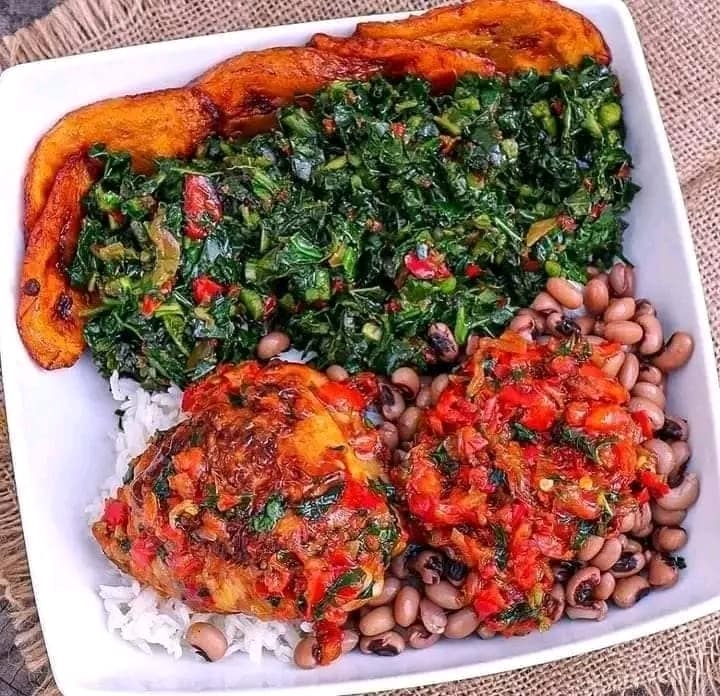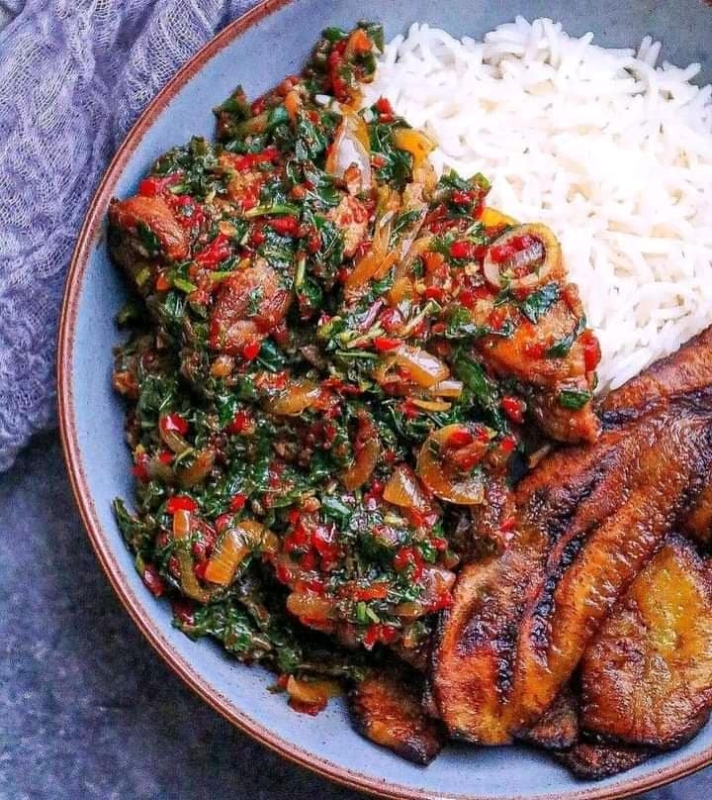News And PoliticsCommunications And EntertainmentSports And FitnessHealth And LifestyleOthersGeneralWorldnewsBusiness And MoneyNigerianewsRelationship And MarriageStories And PoemsArts And EducationScience And TechnologyCelebrityEntertainmentMotivationalsReligion And PrinciplesNewsFood And KitchenHealthPersonal Care And BeautyBusinessFamily And HolidaysStoriesIT And Computer ScienceSportsRelationshipsLawLifestyleComedyReligionLifetipsEducationMotivationAgriculturePoliticsAnnouncementUSMLE And MedicalsMoneyEngineeringPoemsSocial SciencesHistoryFoodGive AidBeautyMarriageQuestions And AnswersHobbies And HandiworksVehicles And MobilityTechnologyFamilyPrinciplesNatureQuotesFashionAdvertisementChildrenKitchenGive HelpArtsWomenSpiritualityQuestions AnsweredAnimalsHerbal MedicineSciencePersonal CareFitnessTravelSecurityOpinionMedicineHome RemedyMenReviewsHobbiesGiveawayHolidaysUsmleVehiclesHandiworksHalloweenQ&A
Food
profile/5935talk.jpg
Favoursplashy

HOW TO PREPARE VEGGIES AND SAUCE RICE
~0.5 mins read


Ingredients:
Rice
Ugu leaves
Fresh Tomatoes
Habanero pepper
Onions
Salt
Crayfish
Seasoning cube
Smoked fish (other protein)
Vegetable oil
Preparation:
•Wash and cook the rice
•Slice the ugu leaves, tomatoes, onions and wrongly blend the pepper and set aside
•Wash the smoked fish, set aside with any other protein of choice
•Put your non stick pot on fire, add vegetables oil, allow to heat up, add onions, salt, tomatoes, pepper, seasoning cube, stir, allow to cook, add the smoked fish, add the ugu leaves, add crayfish, allow to cook for few minutes and your sauce is ready. Enjoy with your rice
profile/4923images28.jpeg
Bikpadan111

_The Best Diet In The World: A Balanced Approach To Healthy Eating_
~2.1 mins read

With countless diets and nutrition plans available, it can be overwhelming to determine the best approach to healthy eating. While individual needs and preferences vary, a balanced diet that incorporates whole, nutrient-dense foods is widely considered the most effective way to support overall health and well-being.
*The Key Components of a Healthy Diet*
1. *Fresh Fruits and Vegetables*: Aim for a variety of colors to ensure a range of vitamins and minerals.
2. *Whole Grains*: Choose whole grains, such as brown rice, quinoa, and whole wheat, over refined or processed options.
3. *Lean Protein*: Include lean protein sources, like poultry, fish, and legumes, in moderation.
4. *Healthy Fats*: Nuts, seeds, avocados, and olive oil are rich in beneficial fats.
5. *Calcium-Rich Foods*: Dairy, leafy greens, and fortified plant-based milk support bone health.
*The Benefits of a Balanced Diet*
1. *Weight Management*: A balanced diet helps maintain a healthy weight and reduces the risk of obesity-related diseases.
2. *Improved Energy*: Whole foods provide sustained energy and support mental clarity.
3. *Reduced Chronic Disease Risk*: A balanced diet has been shown to lower the risk of heart disease, type 2 diabetes, and certain cancers.
4. *Healthy Skin, Hair, and Nails*: Nutrient-dense foods support the health and appearance of skin, hair, and nails.
5. *Strong Immune System*: A balanced diet provides essential vitamins and minerals for a robust immune system.
*The World's Healthiest Diets*
1. *Mediterranean Diet*: Emphasizes whole grains, fruits, vegetables, lean protein, and healthy fats.
2. *Okinawa Diet*: Focuses on plant-based foods, seafood, and soy products.
3. *DASH Diet*: A balanced approach to lowering blood pressure and promoting overall health.
4. *Vegan Diet*: Excludes animal products, emphasizing whole, plant-based foods.
5. *Flexitarian Diet*: A primarily vegetarian diet with occasional inclusion of lean meat.
*Tips for Implementing a Balanced Diet*
1. *Gradual Changes*: Introduce new foods and habits gradually to ensure sustainability.
2. *Meal Planning*: Plan meals in advance to ensure variety and balance.
3. *Cooking at Home*: Prepare meals at home using fresh ingredients.
4. *Portion Control*: Practice mindful eating and control portion sizes.
5. *Seek Professional Guidance*: Consult a registered dietitian or healthcare professional for personalized advice.
*Conclusion*
The best diet in the world is a balanced approach that incorporates whole, nutrient-dense foods. By focusing on fresh fruits and vegetables, whole grains, lean protein, healthy fats, and calcium-rich foods, individuals can support overall health and well-being. Remember, a balanced diet is just one aspect of a healthy lifestyle – regular physical activity, adequate sleep, and stress management are also essential.
*Additional Resources*
- *American Heart Association*: Healthy Eating Plate
- *Academy of Nutrition and Dietetics*: Eat Right
- *World Health Organization*: Nutrition for Health and Well-being
profile/4923images28.jpeg
Bikpadan111

_5 Plants That Can Earn High Profit When Cultivated_
~1.4 mins read
_5 Plants That Can Earn High Profit When Cultivated_
Cultivating certain plants can be a lucrative business, offering high profits and economic growth. Here are five plants that can generate significant revenue:
_1. Agave (Tequila Plant)_: Agave plants are in high demand for their leaves, which are used to produce tequila, a popular spirit. With a growth period of 8-12 years, agave plants can earn up to $1,000 per hectare annually.
_2. Cannabis (Medical Marijuana)_: As medical marijuana gains acceptance worldwide, cannabis cultivation has become a profitable venture. With a growth period of 6-12 months, cannabis plants can earn up to $10,000 per hectare annually.
_3. Coffee (Arabica and Robusta)_: Coffee is a highly sought-after crop, with global demand driving up prices. With a growth period of 3-5 years, coffee plants can earn up to $5,000 per hectare annually.
_4. Ginseng (Asian and American)_: Ginseng is a highly prized herb used in traditional medicine. With a growth period of 4-6 years, ginseng plants can earn up to $10,000 per hectare annually.
_5. Vanilla (Vanilla Planifolia)_: Vanilla is a valuable spice used in food, cosmetics, and pharmaceuticals. With a growth period of 3-5 years, vanilla plants can earn up to $20,000 per hectare annually.
_Other High-Profit Plants:_
- Bamboo (for timber, paper, and crafts)
- Eucalyptus (for timber, pulp, and essential oils)
- Jojoba (for oil and cosmetics)
- Papyrus (for paper and crafts)
- Saffron (for spice and dye)
_Important Considerations:_
- Climate and soil suitability
- Market demand and trends
- Cultivation and harvesting techniques
- Pest and disease management
- Certification and licensing requirements
_Cultivating these plants requires careful planning, expertise, and resources. However, with the right conditions and market demand, they can generate significant profits and contribute to economic growth._
Advertisement
Loading...
 Favoursplashy
Favoursplashy
 Bikpadan111
Bikpadan111